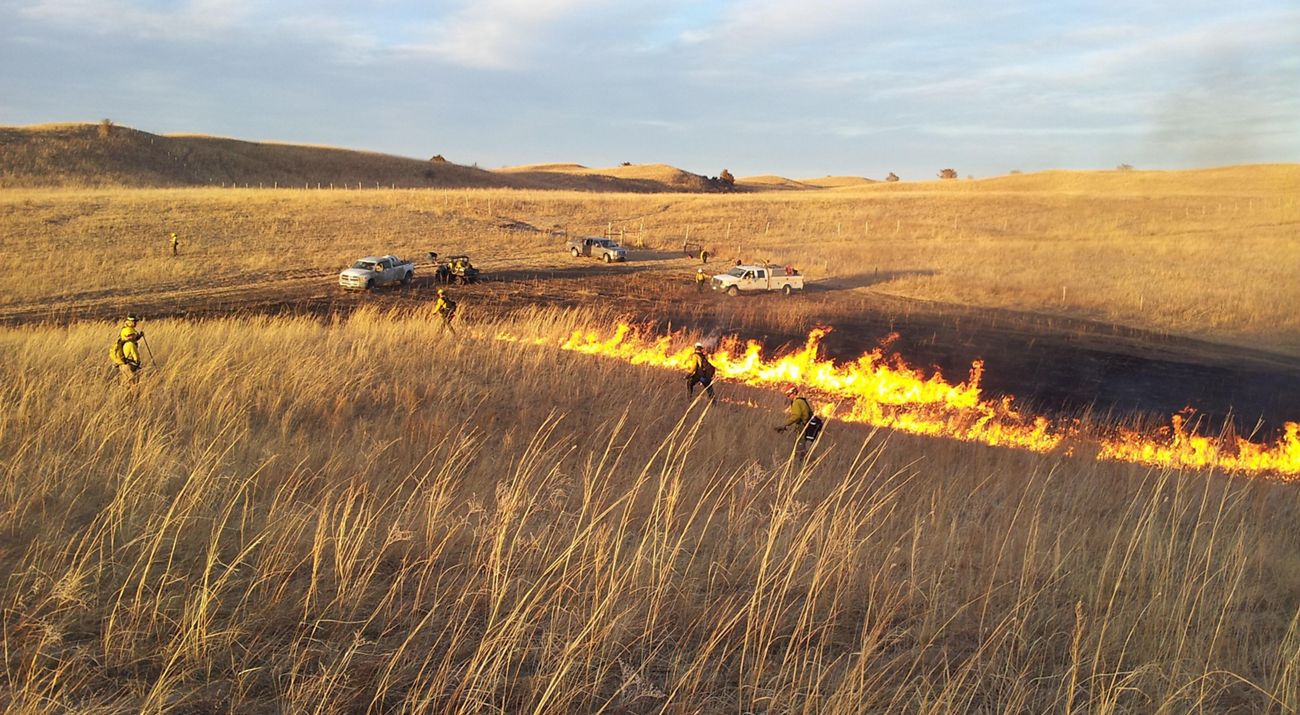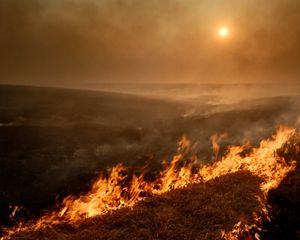
Restoring Fire to Rangelands
Using fire to fight invasive species for people and for wildlife.
In the War Against Invading Cedars, Nebraska's Ranchers Are on the Front Lines
Biologists and ranchers agree—the spread of eastern redcedar is one of the greatest threats to the health and productivity of Nebraska’s grasslands.
To understand the consequences of failing to prevent cedar invasion, Nebraskans need only to look south to Texas, Oklahoma and Kansas. According to an evaluation authored by the University of Nebraska at Lincoln entitled Act Now or Pay Later: “Livestock production and profitability has declined 75% in places where perennial rangelands have been invaded by Eastern redcedar and transformed into cedar woodlands. This invasion is now advancing across Nebraska.”
Biologists are just as motivated. Conversion from grasslands to cedar woodlands has devastating impacts on birds, insects, small mammals, and of course, the grasses themselves.
Chad Bladow, the Nebraska’ program’s Prescribed Fire Coordinator, believes that ranchers—and the culture that has kept the Sandhills intact—are the key to saving them. Here’s why The Nature Conservancy is working to restore fire across the Great Plains.
“It’s not too late. Many ranchers and landowners have successfully implemented prescribed burns to combat the spread of eastern redcedar in the last twenty years,” says Bladow. “Success requires commitment from neighbors, partners and a community of people dedicated to conserving Nebraska’s grasslands.”
Good Fire Takes Teamwork
Partner organizations like the Nebraska Environmental Trust, Sandhills Task Force, Nebraska Forest Service, Nebraska Game and Parks Commission, the U.S. Fish and Wildlife Service, U.S. Department of Agriculture and Pheasants Forever are all working side-by-side with ranchers to provide cost-share incentive programs, fire-related training opportunities and talent to get fire on the ground safely. The Nature Conservancy’s Niobrara Valley Preserve hosts annual prescribed fire training and workshops that focus in the field on live fire education. The Nature Conservancy, partner organizations and private landowners all provide tours and demonstration sites for those interested to see the results from prescribed burning.
How does a rancher that’s new to burning get started? “Call me!” says Bladow. “Tell me what your goals are for your land and I will try to help you get there.”
Chad can be reached at 402-722-4440 or cbladow@tnc.org.


